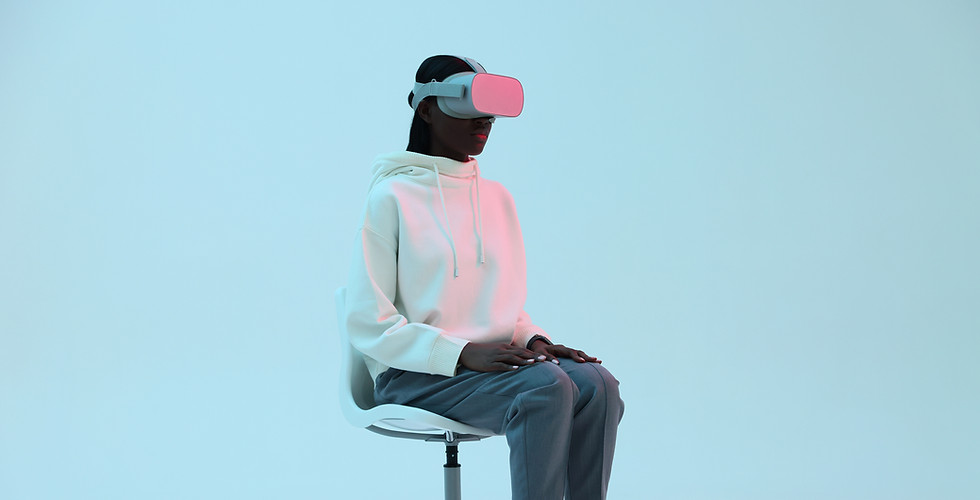Immersive Design
AR/VR Design
Designing for Depth, Space & Storytelling

At Eka, we’re shaping what interaction looks like beyond the screen, by designing spatial, immersive experiences for Augmented and Virtual Reality. AR/VR isn’t just the future of design, it’s the next leap in how we learn, shop, build, and connect.
Our AR/VR design practice brings together storytelling, spatial thinking, interface clarity, and human behaviour.
Whether it’s a virtual training module, a real estate walkthrough, or a product demo in mixed reality, we craft experiences that are functional, intuitive, and future-ready. We don’t just visualise environments, we design how people move through them.
Why Immersive Design Matters
Designing for AR and VR requires more than just aesthetics. It demands a deep understanding of interaction, motion, field of view, and how users behave in 3D space. It’s about making digital experiences feel more human, natural, and memorable.
In this evolving digital economy, AR/VR has wide-reaching applications, from immersive learning and safety training to experiential retail and architectural walkthroughs. But to make these experiences work, they need to be designed with clarity, intent, and accessibility in mind.

Our Design Approach
We approach AR/VR projects with a blend of system design, spatial understanding, and creative storytelling. Every gesture, object, and environment is designed with purpose.
✨ Discovery & Use Case Mapping:
We start by understanding the problem you’re solving and the outcome you expect. Is it exploratory? Instructional? Transactional?
✨ Spatial UX & Environment Planning:
We define user flow in 3D space, how users will enter, interact, navigate, and exit the experience.
✨ Design the Screens:
From dashboards and detail views to forms, modals, and error states, we design each screen with precision and consistency, ensuring that no interaction is left unconsidered.
✨ Interface & Visual Design:
From gaze-based cursors to hand tracking and gesture systems, we design intuitive interactions that feel natural in virtual and augmented contexts.
✨ Prototyping & Simulation:
We test early using interactive mockups and game engines to evaluate usability and realism.
✨ Performance & Platform Optimisation:
Our designs are tested for usability, frame rates, and interaction feedback across platforms, from Oculus/Meta and WebAR to mobile-based XR.

Outcome
01
Immersive environments that engage and inform
Design spatial experiences that go beyond visuals, helping users interact, explore, and understand in ways that feel intuitive, memorable, and purpose-driven.
02
Real-time performance with visual fidelity
Craft optimised 3D assets and environments that balance quality and speed, ensuring seamless performance across AR/VR platforms, even on low-spec hardware.
03
Interactions designed for clarity and comfort
Build gesture-based, gaze-based, or controller-based interactions that reduce fatigue, prevent disorientation, and enhance usability within immersive contexts.
04
Deployment-ready assets for engine integration
Deliver spatial UI designs, tested 3D assets, and export-ready files structured for Unity, Unreal, and WebAR, making development smoother and faster.





